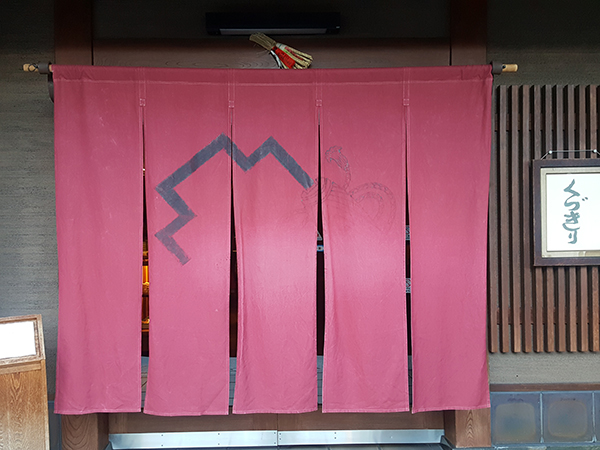 The entrance to ‘Kagizen Yoshifusa’ December 3, 2018 The entrance to ‘Kagizen Yoshifusa’ December 3, 2018
Sunshine Lee's Culture Essay written in Poetry Kagizen Yoshifusa I’ve walked along the boulevard of Gion, Kyoto a lot since 1970 when I first set foot in there. So much so that I thought there was no store or attraction that I didn’t know of on the two sides of the road that extends for 2km from Yasaka Shrine.
And what a surprise.
Granted, the stores are all similarly linked, the displays outside the glass windows all look similar, and the doors are all closed. But, on the day that I thought I had finally discoevered every last store in the Gion boulevard, I was givem a surprise when I went into one store, flinging open the purple curtain covering the front side of the store. I wondered if the moment when I was never going to be surprised by this small city of Kyoto would ever come.
Eye-pleasing wagashi were on display inside. Old furniture, boxes of cookies and antiques were stacked high to the ceiling. It looked very classy at a glance. The place was called Kagizen Yoshifusa. I learned that the Kagizen Yoshifusa was a traditional Japanese dessert shop that opened in the mid-Edo period. It supplied wagashi to the imperial family for a long time. Staff in smart uniforms were serving people waiting in line in a friendly and calm manner. Deeper inside the store, unexpectedly, I found a large teahouse. There was a line there, too.
The place was over 300 years old, so people who would know about these things already knew about this place. It seemed like I was the only one who didn’t know about this place as I didn’t search the internet or read guidebooks. Each confection was the height of refinedness, and the store and the teahouse’s interior was dignified with the scent of history. It was beautiful, overwhelming customers.
Looking at a black-and-white picture of the store from 300 years ago hung on the wall next to the designated waiting area, I waited.
And I was ushered to a spot with a window overlooking a small garden of about 6.6m2. I opened the menu as I’ve never been here before. Seeing people around me opening a tall green container and eating noodles, I decided to order the kuzukiri.
Eventually a stately two-tier container arrived for me. Set in front of me was some kuromitsu, meaning black honey, a small wagashi, and a cup of tea. The classy dishes made me feel like I was being treated courteously. I opened the container, picked up the colorless long noodles in ice water with chopsticks, dipped them in kuromitsu sauce, and took a bite. It felt cold and tasted like thick honey sauce – but that was it. Kuzukiri is the root of an arrowroot, known as ‘arrowroot soup’ in Korean medicine. Kuzukiri is made of dough from ground roots of arrowroots. It is tasteless, and has the effect of warming the body, purifying the blood and curing colds. The place had a relaxed and fabulous ambience above all, so I waited in line to eat at the place for three days in a row.
Aside from kuzukiri, they had other things for dessert, too: warabimochi, which is a jelly-like confection covered in soybean flour, a set of matcha tea and wagashi, sweet red bean porridge, and a variety of wagashi, sweet jelly made from red beans and rice ball cakes.
They hang pictures of the East and West in harmony, and the scale of this place is quite big for a Japanese teahouse. It has an atmosphere of old traditional Japan and the cool West combined. The small garden viewed from inside the teahouse is decorated in a lovely Japanese manner – I feel at ease here. “Resting while learning” is the best rest.
And this place is a historical place that famous writers of the old days in Kyoto frequented. It’s especially fun to imagine what kind of inspiration they got from here, and what kind of things they wrote while sitting here in front of these teacups. I also opened my notebook.
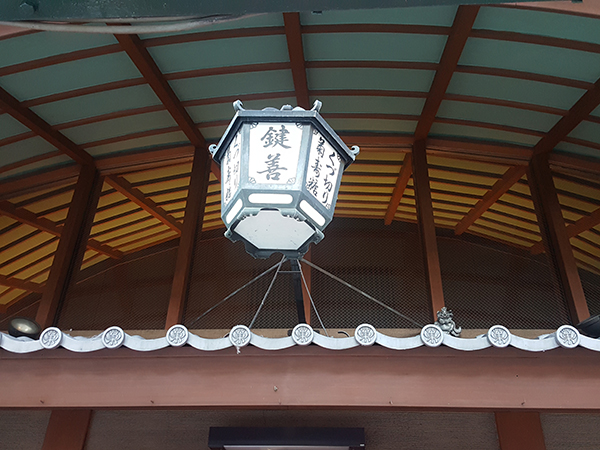 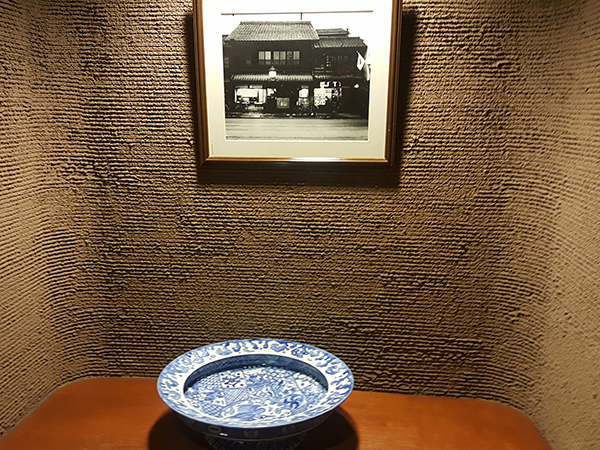
The picture of Kagizen Yoshifusa from 300 years ago 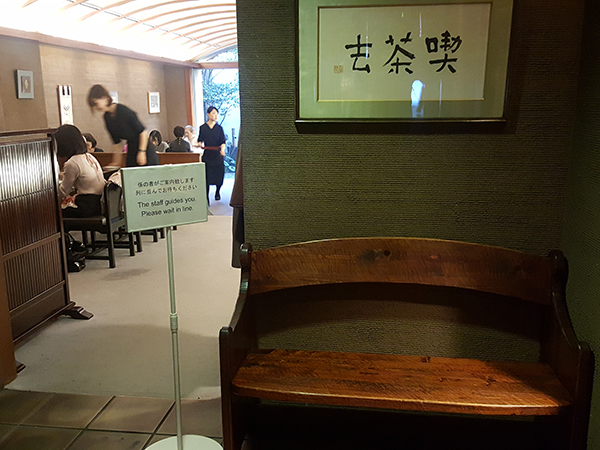
The waiting area in Kagizen Yoshifusa 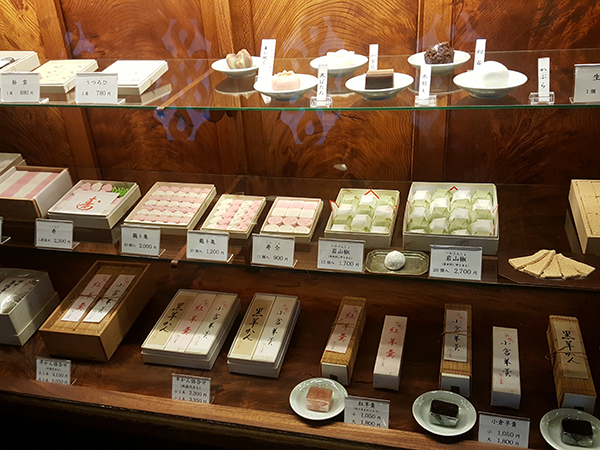
Wagashi, rice cakes, sweet jelly of red beans of 300-year history 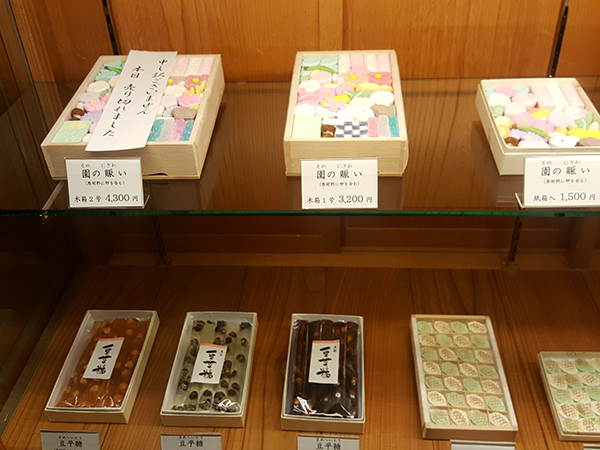
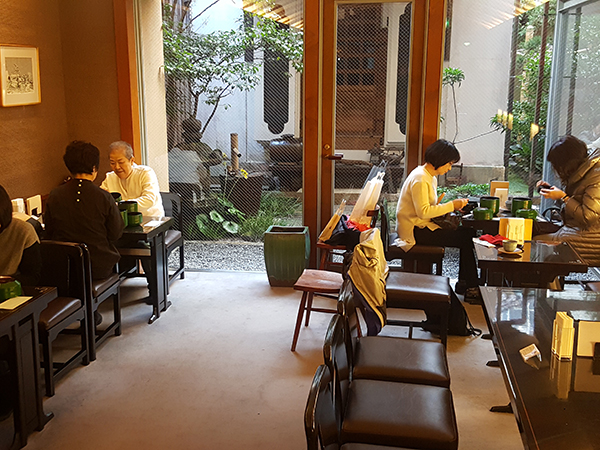
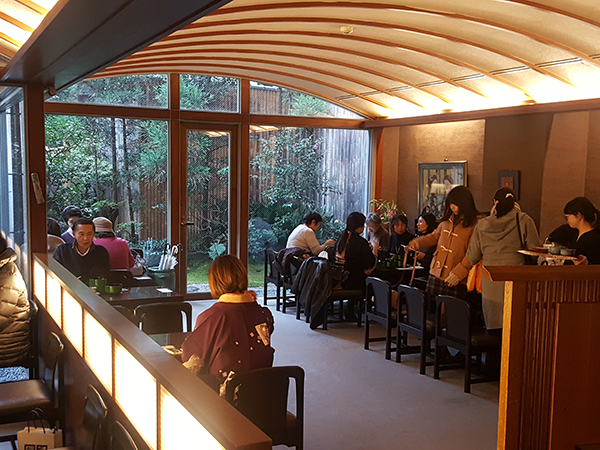
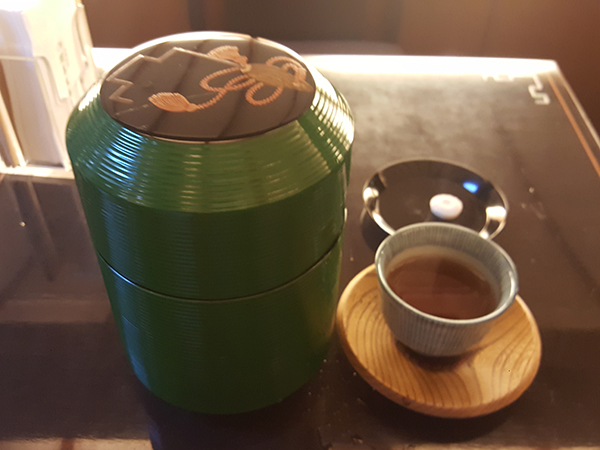
Two-tiercontainer holding clear kuzukiri made of roots of arrowroots 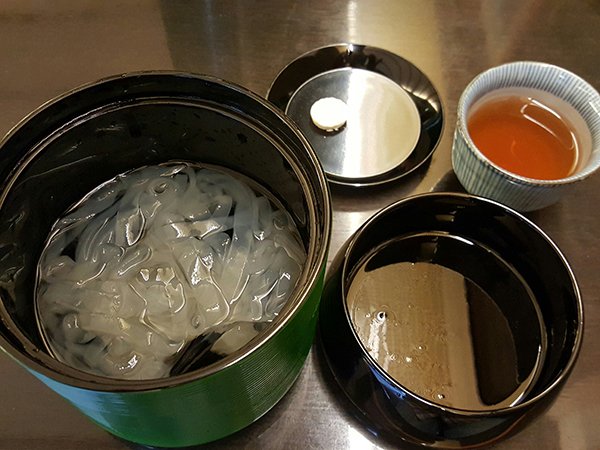
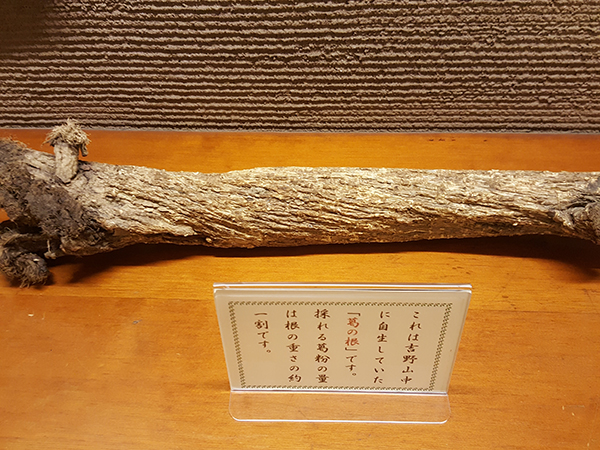
Rootsof arrowroots - Kagizen Yoshifusa Kyoto, April 2019 | 
